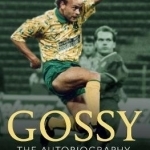
Gossy the Autobiography
Jeremy Goss, Edward Couzens-Lake and Mick Dennis
Book
'Your time will come' This is the story of former Norwich City footballer Jeremy Goss. Gossy is, of...
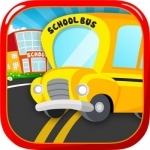
Baby School Bus - Drive Pretend Play Babies Games
Entertainment and Games
App
Baby Bus is a fun role playing app for the little one to drive a school bus. Have you ever noticed...

Office Documents: Word Processor, PDF Reader, PDF Scanner, Media Player
Business and Productivity
App
SPECIAL PRICE FOR LIMITED TIME ONLY!! REGULAR PRICE $9.99 This is the Most Essential Documents and...

Nero Receiver
Photo & Video
App
Stream videos, photos & music via your PC in your home network and play your media wirelessly on...

Coach's Clock
Sports and Utilities
App
Keep track of your players' time on the field with Coach's Clock. Designed with input from a youth...
Purple Phoenix Games (2266 KP) rated Nanuk in Tabletop Games
Jun 12, 2019
Nanuk, technically, is a polar bear. The same found on the cover of the game box. He is attempting to nom on an Inuit hunter. But worry not, in this game Nanuk does not eat people. Just the animals that have been hunted by the people to be brought back to the village as a result of your pig-headed boasting. Oh, you say you can bring back 17 fish in three days? I say you’re doomed.
I do not want to get in a habit of explaining games in my reviews, but I feel like Nanuk could benefit from it, so I will be quickly paraphrasing.
In Nanuk play goes around the table where each player must increase either the number of animals (and you can change the animal type) or the number of days of “the Hunt.” Example, I increase the current boast from three deer in one day to four birds in one day. Once a player no longer thinks the combination of animals and days will a successful hunt make, they must flip over their voting token to the doomed side. The last player to have upped the ante is the Hunt Leader and the naysayer is the, idk, Doom Leader I think. Then everyone evaluates the animal and Inuksuk (the awesome humanoid stone statue) cards to determine if they should join the Hunt or Doom team, flipping their voting token thusly. Every player then must contribute at least one card from their hand that will be shuffled together as the results of the Hunt. Should the boast parameters be met between the cards contributed and cards drawn from the deck (equal to the number of days boasted) the Hunt team wins and spoils are split among the team members. If not, the Doom team wins the spoils. At the end of the game you are hoping to have amassed sets and pairs of animals to score the most VP. There are a couple other rules that I will leave you to discover, but that is the… meat… of them.
I received my copy of Nanuk cheaply from a BGG auction many years ago. I was not sure exactly what to expect of it, but I was diggin the cover art. Once we played it, and played it again, and more, I began to love it more and more. It’s not a long game, the rules are relatively simple, and it is very much a social game. I wouldn’t necessarily call it a “party game” because that term just has different connotations to me, but it will play 5-8 players quite comfortably. Many times I have a group of 6 or more and this always delivers. Please give this one a try and I know you will enjoy it.
Someday we will start making lists and such, and this will go on my list of favorite games that support a larger play count. That said, Purple Phoenix Games gives this one a 12 / 18 (because Laura has not yet played it).
https://purplephoenixgames.wordpress.com/2019/01/16/nanuk-review/

USB Flash Drive Pro Version
Utilities and Productivity
App
With USB Flash Drive, you can store, view and manage files on your iPhone / iPad. USB Flash Drive...
Ivana A. | Diary of Difference (1171 KP) rated Warcross in Books
Dec 13, 2018
A fantasy of a virtual world, and a game that brings people together. A story of a girl that struggles to pay her rent, and her ability to hack the most important game of the year - Warcross. And when the creator of Warcross hires her, needing her help - she begins her adventure.
From the first moment that I read the synopsis of Warcross, I knew I wanted to have this book on my shelf and read it immediately. A couple of reasons stand behind this story:
* A girl is a main character, and a fierce one. As boring it might seem, I love a book with brave characters, especially if it’s a teen girl. I think when girls are featured as brave and fearless in books, it gives encouragement to a lot of girls reading the book, that are struggling through their teenage years.
* I am a vivid video games player. I play a lot of games, and this is something you might not have known about me. Feel free to ask me anything in the comments. I love the gaming community, and I believe that if it weren’t for the video games, I wouldn’t be who I am today.
* If you haven’t read it, you have all probably heard about Ready Player One. I absolutely loved it, and watched the movie, and I am still in love with it. And when book reviewers started comparing Warcross to Ready Player One, I had to see if this was true. I just had to check for myself.
And then, I got this book as a birthday gift from my boyfriend. So here we are, a few reasons after, me having read this book and telling you all what I thought.
Firstly, I feel like I need to say this - Warcross is nothing like Ready Player One.
Yes, we have a virtual world, and (surprise) virtual characters in the world. And yes, there is a game and the creator of the game is involved. But the whole plot and story are so much different in so many ways.
The descriptions of the virtual world, the story lines, the dialogues, the way the story flows, the romance - it is all unique and original.
And for you out there that compare this to Ready Player One - it is as if you are comparing Romeo and Juliet and Tristan and Isolde, only because they both have a plot of romance and forbidden love. It is ridiculous, let me tell you.
Even though the Warcross game as its own was brilliantly explained and described, I felt like we didn’t see much of the rest of the virtual world. I loved the way Marie Lu would talk about the world - so much passion in each chapter.
The discussion opens on virtual reality and the worlds that could be created. It is not a matter of whether it will happen, but when? I keep thinking I might be alive when we will live in a world of ''virtuality''. Would we be happier? Would we be smarter? Or would this just be another tool for people to get richer, by using its users? Is the future scary? Should it be?
Emika is a character I think many girls will relate to. Brave and fierce, even though she is afraid inside. A strong, young woman, that stands for what she believes in, even when this might mean losing the people she loves the most.
The story flows so quickly, and each end of the chapter begs you to start another one, and before you know it, it’s 4am and you keep reading, unable to stop. This book has some strange power right there!
The twists were interesting, even though some of them were predictable. Even with the knowledge of this, I would always miss something amazing, and even knowing what will happen, the experience was always pleasant.
I am so glad I got to read this book, and I am so excited to read Wildcard soon as well. I am definitely recommending this to all of you - I am sure you will enjoy it.
If you have read it, let me know what you think in the comments - I would love to discuss it!
Purple Phoenix Games (2266 KP) rated Drop It in Tabletop Games
Oct 22, 2019
Did you ever play Connect 4? Who am I kidding, of course you probably did. Drop It is essentially an abstract version of Connect 4. In Drop It, players take turns dropping their pieces into the slot board in an effort to amass the most points. Each player has a set number of pieces in their specific color, and in various shapes. The rules of Drop It are simple – pick a piece and drop it (roll credits) into the board. You earn points for the highest level that your piece crosses into, as well as bonus points for touching various smaller areas across the board. Sounds easy enough, right? Well here’s the tricky part. If your piece touches another one of your pieces, even if by just a hair, it earns you no points. Similarly, if your piece touches another piece of the same shape (regardless of color), you earn no points as well. AND on top of that, certain areas along the bottom and sides of the board are colored and are not allowed to be touched by their corresponding colored pieces. If a piece touches one of those forbidden zones, then that player earns (you guessed it) no points. So all in all, not as simple a game as it looks, is it? The player at the end of the game with the most points is the winner!
Man, Drop It is a neat little game. When I first heard of it, I thought it would be the easiest game on the planet. But boy oh boy was I wrong. Although I’d say this game is primarily one of dexterity (and luck), there is definitely quite a bit of strategy involved. Because there are several placement restrictions, you have to be careful about which pieces you play at what times. The circles roll around on pretty much anything, so do you risk dropping one when it might just roll onto your square and negate those points? Can you drop your trapezoid at the right angle to have it span two other pieces and miss landing on yours in the middle? All while making sure it doesn’t hit the left side of the board here? It is way more strategic than meets the eye, and I love that. It keeps me engaged the entire game, and it elevates the game to a higher level than just simple dexterity.
Whatever strategy you choose must involve your opponents as well. Even though there is no real player interaction in Drop It, you’ve got to keep an eye on your opponents and which pieces they play at what times. If another player just dropped their square right in the middle of the board, you probably should not drop your square right now. Unless you don’t want points. Then by all means, drop your square right on top of that sucker. Are you able to keep a variety of shapes throughout the game, or will you get cornered for several turns because all you have left are your circles? You’re not only thinking of your strategy, but that of your opponents as well.
One other thing that I love about Drop It is that once a piece is scored, it is out of your mind. What I mean is that in some cases, dropping a piece causes those underneath to shift. You only score the piece that was just dropped – regardless of how it moved any pieces underneath. That definitely helps to keep the game moving because you are not having to constantly go back and re-score any shifted pieces. That would just be brutal.
Overall, I really like Drop It. It’s not one that I personally own, but it definitely is on my Wish List after having played it. It’s the perfect little filler game for in-between some meatier games. Although it requires strategy, the dexterity aspect of the game makes it more light-hearted, fun, and fast to play! Purple Phoenix Games is dropping a score of 14 / 18 for this little gem.
Purple Phoenix Games (2266 KP) rated The Quest Kids: Matching Adventure in Tabletop Games
Mar 25, 2021
The Quest Kids: Matching Adventure (can I please just call it MA from here please?) is a tile matching game based off the old evergreen Memory mechanic. However, this isn’t your gramma’s Memory. In it players are recruiting The Quest Kids to scare off the silly bad guys by matching tiles and collecting treasures. The player with the most stars at the end of the game will be the winner! But in actuality, all the players will be winners because all will have had a great time.
DISCLAIMER: We were provided a copy of this game for the purposes of this review. This is a retail copy of the game, so what you see in these photos is exactly what would be received in your box. I do not intend to cover every single rule included in the rulebook, but will describe the overall game flow and major rule set so that our readers may get a sense of how the game plays. For more in depth rules, you may purchase a copy online or from your FLGS. -T
To setup, shuffle the brown tiles, forest tiles, and river tiles separately. Lay out the brown treehouse tiles face-down into a 5 x 4 grid. Around these brown tiles will be placed the river tiles and forest tiles, the numbers of which are dependent upon how lengthy the players wish the game to be. Add the appropriate types of treasure tokens to the provided treasure chest and the game is ready to begin! We ALWAYS let our little go first. They like that.
On a turn each player will attempt to recruit a Quest Kid Hero from the brown treehouse tiles. Once a match has been found the player may begin taking their hero on an adventure! Adventures can only be attempted when a player has matched two Hero tiles from the treehouse. An adventure consists of finding a matching pair of bad guys, one each from the forest and river. For example, in order to find the matching Honey Beard bad guy tiles a Hero would need to search the river for one tile AND the forest for its match.
When bad guys are matched they provide the player with a certain number of treasures, as printed on their tile. The player reaches into the treasure chest and pulls out the correct number of treasures (my son’s favorite part). These treasures provide a number of stars (VP) depending on whether the player has matched a specific hero or not. Less stars are awarded if the appropriate hero is absent, more stars if that hero has been matched by the player.
Some treehouse tiles contain Quest Kid Allies. These Allies provide stars, but also very helpful special abilities to be used on a future turn. When these Allies are matched, the active player keeps the tile with stars and gives away the matching tile to another player. So that other player may also use the Ally for its special ability on a future turn. Alliances with a 3-year-old? I can dig it! Alliances that do not involve said 3-year-old? Watch out for the forthcoming tantrum.
Play continues in this fashion of matching tiles, scaring away bad guys and receiving treasures, and utilizing Ally special abilities until all tiles have been matched and claimed. Players all add up their stars on their collected tiles and treasures, and the most stars collected wins the game!
Components. This game is a ton of tiles and treasure tokens. That equates to, well, a whole bunch of thick cardboard in a box. The material quality is very good, but I am most impressed with the art style. I love game art that can be cartoony while also being interesting and detailed. Such is the art here. The characters are really well illustrated and each have their own personality. I have one gripe about the components: the treasure tokens feature a small picture of the Hero that allows it to be worth more stars. That Hero picture is very very tiny and details do not really transfer well to the small space, so it IS difficult to know which Kid will power up the treasure. I did find a workaround if players are not colorblind: each Hero is featured along with a color. That same color is used as the token icon and can more easily be matched to the Hero. It may save some headache if players are able to use the color as the indicator instead of the tiny picture.
In a nutshell this is Memory with strategy. The main game mechanic is memory – matching up the tiles in order to collect them. However, by throwing in the randomness of treasure token pulls and the Ally special abilities, MA just becomes a thousand percent more compelling for children and adults alike. At the end of the game my son is having a great time and almost always asks to play again. The adults are also impressed that Memory can be so much fun!
So if you are looking for that game to introduce to your youngster that actually challenges their little minds, then I strongly recommend The Quest Kids: Matching Adventure. Yes, it’s Memory, but it’s Memory that is actually fun. It’s Memory with a theme, and a kid-based theme at that. It gives the littles an opportunity to look up to these kid heroes and lets them imagine being heroes themselves. Any game that helps to empower my children will definitely be a well-loved addition to my collection. Purple Phoenix Games (well, my wife, my son, and I) give this one a victoriously heroic 16 / 18. I won’t say that I will beat you every time, but my son may. I dare you to play against him. Just make sure you throw all your extra Allies to him or he will get real mad real quick.
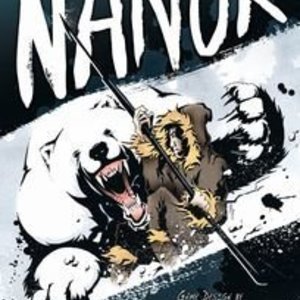
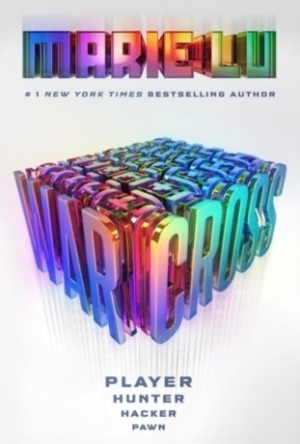
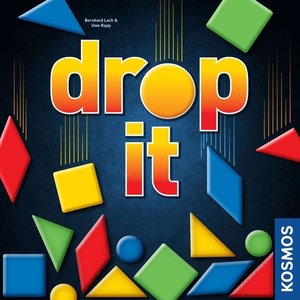
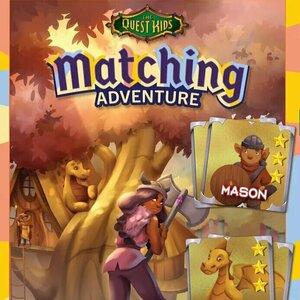
The Marinated Meeple (1853 KP) Jun 12, 2019
Purple Phoenix Games (2266 KP) Jun 12, 2019